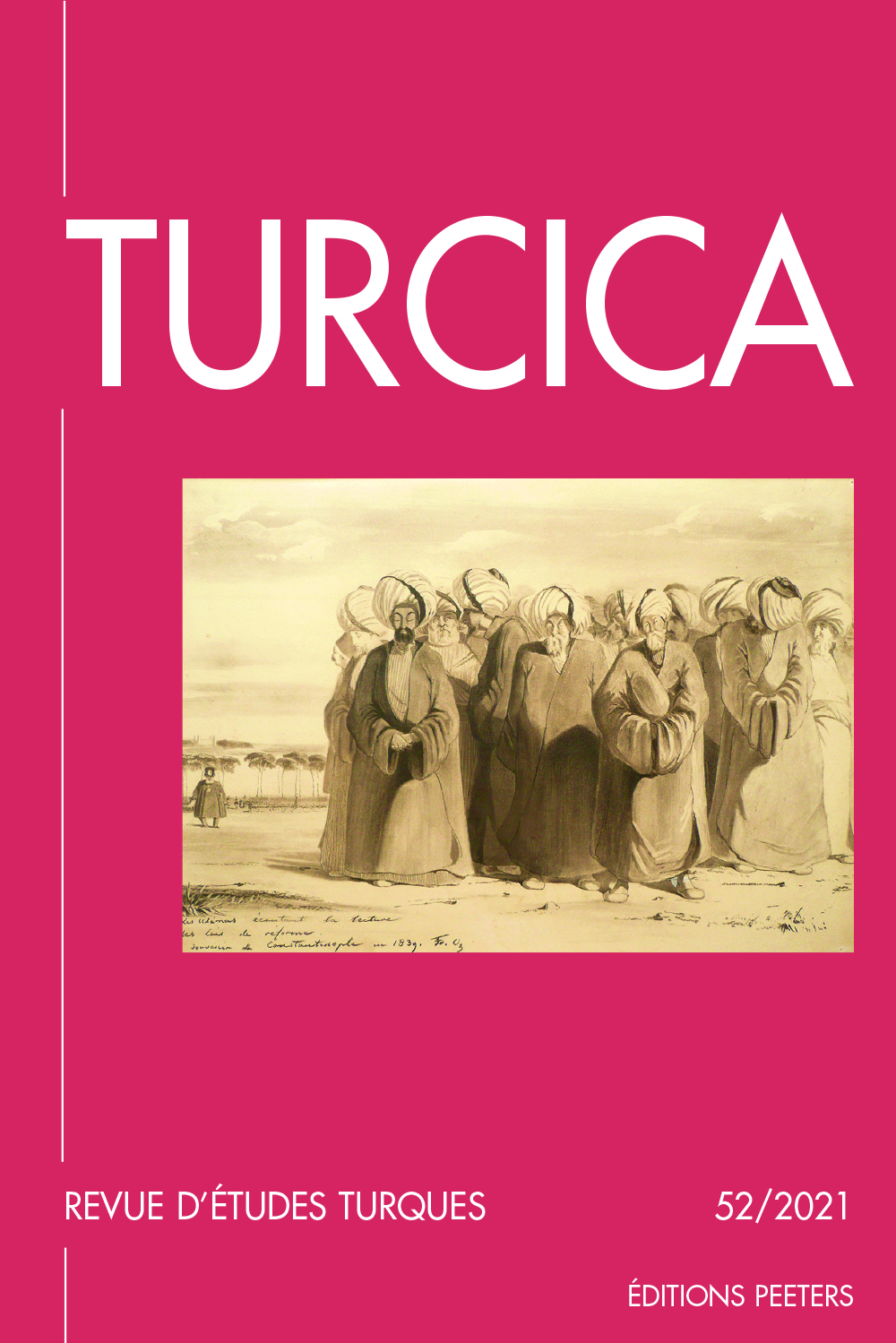 previous article in this issue previous article in this issue | next article in this issue  |

Preview first page |
Document Details : Title: Présentation et esquisse de description de l'écriture traditionnelle salare ou türk oğuş Author(s): VAILLANT, Adrien Alp Journal: Turcica Volume: 51 Date: 2020 Pages: 285-312 DOI: 10.2143/TURC.51.0.3288391 Abstract : Le salar, dialecte turc parlé principalement dans le comté de Xunhua, situé au sud-est de la province chinoise du Qinghai, dispose d’un système d’écriture traditionnel du nom de türk oğuş. Ce dernier, qui constitue une adaptation de l’alphabet arabe, est aujourd’hui moribond, très largement méconnu et n’a fait jusqu’à présent l’objet que de brèves allusions et d’un nombre infime d’études confidentielles. Parmi celles-ci, la plus complète de celles que nous ayons pu consulter est un article de Hán Jiànyè (publié en 1989), que ce chercheur a publié sous le nom de Yībùlā Kèlìmù. Il est possible d’y voir un travail de sensibilisation à l’existence du türk oğuş assortie de quelques règles et de renseignements sur la dénomination salare de certains de ses signes constitutifs. Toutefois, si intéressante qu’elle soit, cette étude ne permet pas de se faire une idée précise du fonctionnement de l’écriture traditionnelle salare. Le but du présent article est justement de proposer, en s’appuyant, pour la première fois semble-t-il, sur un texte et des exemples, une description plus détaillée du türk oğuş, qui, nous l’espérons, contribuera à le tirer de l’oubli quasi total dans lequel il est tombé. Salar, a Turkish dialect mostly spoken in the county of Xunhua, situated in the southeastern part of the Chinese province of Qinghai, possesses a traditional writing system known as türk oğuş. The latter, that constitutes an adaptation of the Arabic alphabet, is nearly extinct, largely unacknowledged and has so far been only the subject of brief references and a tiny number of studies with a very narrow readership. Among these references, the most comprehensive the author could consult is an article by Hán Jiànyè (published in 1989) that this researcher published under the name of Yībùlā Kèlìmù. One can consider it as a work aiming to raise awareness of türk oğuş’s existence with the addition of some rules as well as information on the names given in Salar to a part of the signs this writing is made up. Yet, however interesting as it is, the study in question does not provide a clear picture of the way türk oğuş functions. The object of the present paper is precisely to propose a more detailed description of the Salar traditional writing system, that draws, to the best of our knowledge for the first time, on a text and examples, and will hopefully contribute to rescue it from the almost total oblivion into which it has fallen. |
 |


